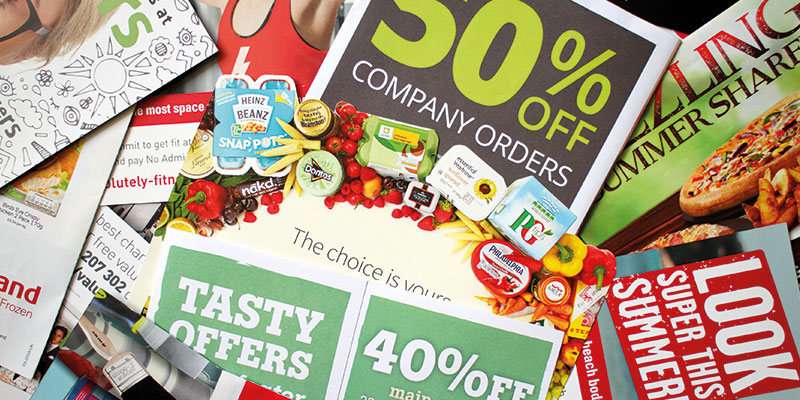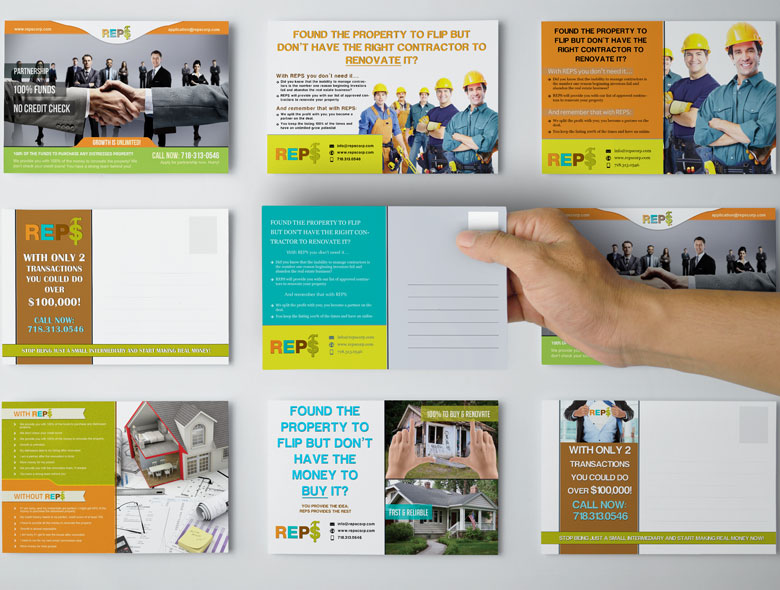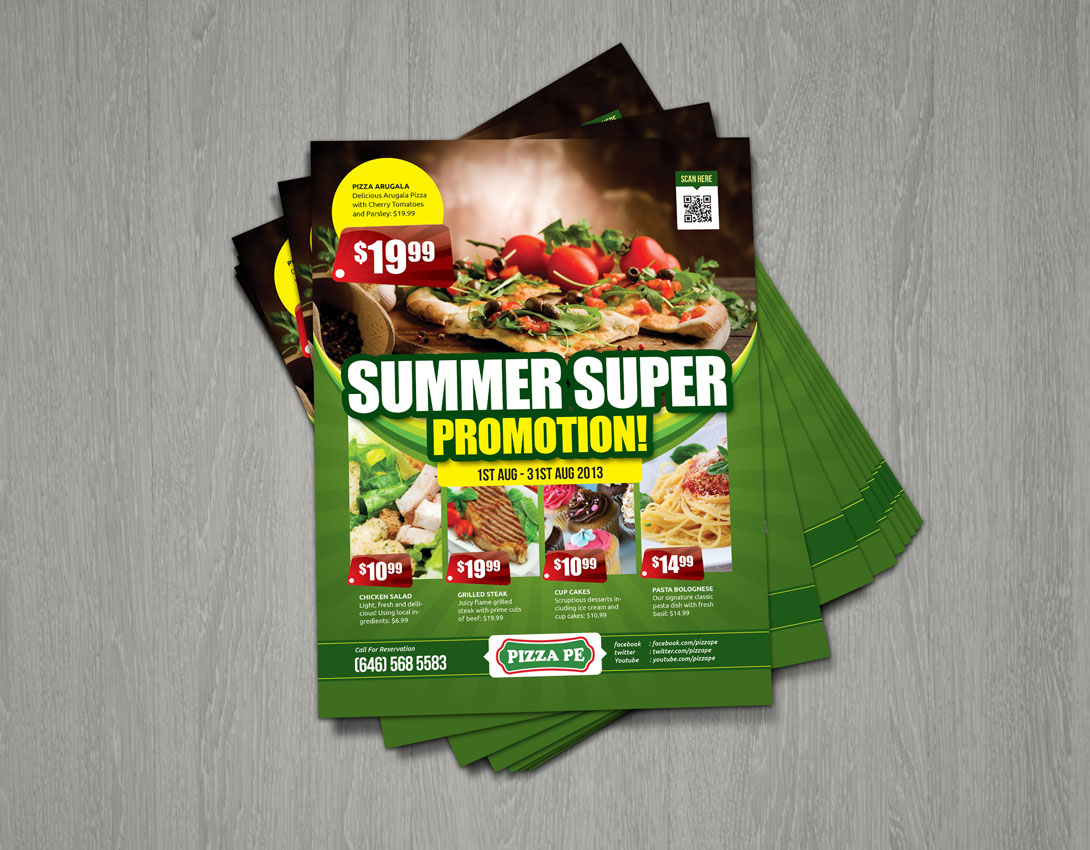Contrary to popular belief, Direct Mail marketing is alive and kicking. In fact the ROI on direct mail marketing is amongst the best in the marketing world. Direct mail can be very effective to generate leads, promote special offers, drive traffic to the business, generate retail sales and communicate with customers.
Starting any direct mail marketing campaign start with a list. Sending out direct mail pieces and mailers can be expensive and having a weal list can mean wasting money on mailers that are thrown in the bin.
In this article we look at how to strategise and run a successful direct mail campaign starting with coming up with a strong list followed by formulating, designing and executing the campaign itself.
Characteristics of a great direct mail marketing strategy
As always I like to list all the great characteristics of any strategy. Strategies are the foundations of any great undertaking and any successful outcome. Especially in brand building and marketing, strategies play a critical role.
Develop the master plan – Before anything else, we have to come up with a plan for the direct mail marketing campaign. This plan should include the campaign objectives and goals, the target audience, list details, creative strategy, mail-piece format, timing, delivery channels, implementation and campaign timeline.
Build or purchase a list – A great list means a successful direct mail campaign. A poor list means time, money and resources wasted marketing to the wrong people. We have to either develop or buy a great list.
Estimate the response rate – Estimating the response rate of any campaign would help with understanding and projecting conversions and revenue in relation to marketing ROI. Even if it is your first direct mail marketing campaign, it pays to put some time and effort into this.
Creative strategy – We must create a creative strategy for our direct mail campaign that outlines the copy style, tone, branding and design elements, use of graphics, photos and images. This is very critical since a great campaign and offer supported by poor, cheap and tacky looking direct mail pieces will always lead to failure. Consumers are quite design conscious these days and will be put off by even a hint of unprofessionalism.
Testing the campaign – It is always a good idea to test direct mail campaign before launch. Testing to a small subsection of the list would be a good idea. You can split test the copy, design, offers etc before going full scale. Just make sure that you can clearly track the results so you can choose the right split to use for the campaign.
Launch and fulfilment – Once the launch happens it is very important to have a strategy in place for the fulfilment of the offer. Fulfilment can include inbound calls, website hits and conversions, email responses, honouring the offers and sales.
Step 1 : Develop the master plan
To start creating the master marketing plan for your direct mail marketing, we need to figure out the goals and objective of the campaign. Is this going to be an integral part of a larger campaign? What kind of leads do you need from this campaign? What kind of ROI do you expect – in a broad sense.
Campaign Objectives
Work out the kind of leads that should be generated from this campaign – if you already have a buyer persona created for this target audience that would be a great place to start.
Do you want to close deals? – if the objective of this campaign is to close deal right away, an entirely different strategy needs to be applied as opposed to if you are seeking to start off the integration with your prospects with the direct mail which would then be followed by phone calls etc.
Are you looking to build customer relations? – if the campaign’s main objective is to nurture and build customer relations then the strategy should include a lot of personalised campaign parameters. This requires a lot more work on the list and segmentation to be effective.
Are you simply looking to build brand awareness? – if the campaign is to build brand awareness and brand recall then the strategy would relay heavily on branding, great marketing copy and creative ideas.
Target Audience & List Source
Working out the target audience and then segmenting that further into finer strands is critical to the success of any direct mail marketing campaign. For example, if the primary audience is executives then the copy should include benefit based points and incentives with clear ROI indications. If however, the audience is primarily customers then it should go easy on the benefits and focus more on the “world view” of the brand and bringing the customer into it as a member.
Your target audience will determine the source of your list. If they are customers then it would be in house list. If they are prospects that came through another touch point of your brand such as a website or a social media channel, then the list would still be in house but it has to be cleaned and segmented properly. If the audience is out there and you have no direct access to them then you may want consider purchasing a clean list.
What are you offering?
The soul of your offer also depends on the target audience and source of your list. If your target audience is complete strangers to your brand then great care must be taken in formulating the offer. It should not come off as a “bribe” or appear to lead to a sales appointment etc.
What are the benefits of your offer to your audience? Can you create a genuine sense of urgency in your offer? Beware or false urgency offers that sounds cheap and tacky. They can damage your brand reputation.
How do you plan to fulfil the offer?
Once the campaign is launched, you should have a clear and concrete plan on how to deliver on your offer and promise of the campaign. There could be nothing worse not following through on your offer and upsetting your prospects and losing the investment that went into the campaign.
If you promise a demo or a free consultant or a sample product then you must deliver on that promise with out fail. Create a plan that ensures this.
What is your campaign timeline?
Establish the campaign key dates for your campaign milestones such as
- Master plan complete
- List secured
- Marketing copy and design
- Final artwork to printer
- Date when your prospects get the mail
- Campaign completion
- And so on
Step 2 : Build or purchase a list
The next step is work on the all important list. The quality of your list will determine the success or failure of your direct mail campaign. Targeting your audience is crucial in building or securing the right list. The narrower the focus the more effective the list will be. Do not fall for the temptation of going for a generic list just because it has a large number of records.
By securing a targeted list, you will spend less on printing, postage costs and still increase your response rate.
Building an in house list
If you target market is niche or is quite small then you are better off building that list than buying it.
Building lists is more common for B2B companies than B2C, as it’s typically easier to find target names in directories and on the web for businesspeople compared to consumers. And, it’s generally cheaper and faster for B2C marketers to purchase or rent a list or provide opt-in content to generate a following.
Here are some resources for building an in-house list:
- CFO magazine, American Marketing Association Directory, list of trade publications by industry
- Google or other search engines
- Yellow Pages, DMOZ, Business.com, Wikipedia
Purchasing a list
If your target market is huge then you would be better served with purchasing a high quality list.
There are different sources for purchasing lists including compiled data firms, response list firms and co-op business lists.
Here are a few compiled data firms from whom you can buy quality lists:
- Dun and Bradstreet
- Experian
- Harris Infosource
- InfoUSA
- Hoovers
- Harte Hanks
- OneSource
- Data.com
There are certain firms that gather data and create lists based on opt-in signups. Examples of such firms include publishers of trade magazines, sponsors of trade shows, sellers of business products and services, seminar companies and even some industry associations.
Whatever source you go for, please make sure that the list is clean and that you would have the legal permission to market to that list. Nothing could be worse than spam.
Step 3 : Creative Strategy
Second to having a great list, a direct mail campaign’s success or failure is dertmined by the visual branding and appeal of the pieces. It is critical to be on-brand with a consistent look and feel and professional graphics and photo elements.
This is where most companies go wrong. They spend thousands on aquiring or building a list and would spend thousands more on the printing and posting of the mail pieces. But they skimp and try to save money on the creative aspect of the direct mail pieces.
In fact a lot of the time, the brochure, postcard or direct mail piece design is done by someone with in the company. Now, there is nothing wrong with that – provided that someone is a creative professional. Just having an eye for design and the ability to push shapes around a graphic design sofware does not cut it.
Starting the overall layout of the design, the choice of colors, brand identity application, choice of typography and other design decisions are crtical.
Usage of colors
Be careful with the choice and usage of colors. They should be on brand but not over use the brand colors. Try to find compatible and complimentary colors. Use color swatches or online color palette creators to find the best suit of colors for your design piece. Always start by creating the color palette.
Brand Logo Design
Use the brand logo design effectively on the design. Often you see direct mail pieces that push the creative envelope but end up de-emphasising the brand mark or logo. This would lead to lack of brand awareness and brand recall when the mail pieces reach the audience. Place the branding prominently but do not overwhelm the design at the cost of hurting the message.
Typography
Typography is your best friend and if used effectively will ensure the pieces is well received. Proper use of typography leads to a narrative and flow of information on your postcard, brochure, flyer or card.
Read Brand Identity Case Study
Step 4 : Launch & Fulfilment
Before a full scale launch make sure you test out the campaign. Split testing is a great idea. Create two or more versions of the creative pieces and test them on small samples of the list. Gauge the response. Analyze the resonse and compare them against the goals and objectives of the campaign.
I will not cover posting the direct mail pieces as that depends a lot on where you reside and what kind of postage your choose. Just make sure not to skimp on the covers and envelopes etc. Digital marketing is easier to quantify and track the metrics. Email marketing can also be part of your overall marketing strategy and includes tracking open rates, landing pages and call to action clicks.
Once the launch is done and your target audience get the direct mail, get ready to fulfil the promises you made in your direct mail. Have a strategy in place to cover all eventual scenarios. Your fulfilment strategy will determine the conversion rate of your campaign. Go wrong with this and all the time, effort and money invested in your campaign would be wasted.
For example, if you promised a discount in your campaign, ensure that your staff and team understand how the discount process works and are trained to provide the discount with out hassling the customers.
Be prepared with sufficient inventory in case the camaign is very effective and the orders come flooding in. Nothing could be worse than turning away customers due to lack of inventory.
If your campaign prompts people to pick up the phone and call your compant, ensure you have sufficient resources handling the phones. Or just outsource this part to a call center.
Track responces and fulfilment to ensure your campaign goals and objectives are being met.
The Changing Face of Print Marketing
Although many claim that print marketing is on its way out, a new report finds that businesses are continuing to use the medium in increasingly savvy and modern ways.
The catch is that many types of print marketing are now created to interact with digital media such as computers and smartphones.
Everyone knows that digital marketing is key to success in modern business, but print is holding its own. This report, which was researched and released by NewPage in the fourteenth issue of the company’s Ed newsletter, found that print is not going anywhere, but that it is increasingly being used in new ways.
In fact, a mix of traditional and digital marketing may be crucial to winning over modern audiences.
There are several ways print can ‘interact’ with digital and print advertising. For instance, printed materials can be made to interact with computers to give interactive content.
Bar codes can be placed on printed materials that, when scanned by a smart phone, direct customers to your website.
Another study conducted by the UN’s Food and Agricultural Organization found that paper products don’t detract from forest growth and actually may contribute to it.
This is because most paper trees are raised specifically for the purpose, and not all of these trees are cut down. In fact, trees planted and raised for paper represent most forest growth in modern times. Tree farmers plant an estimated four million trees every day and harvest just a quarter of these trees.
Using print materials just may help the environment, but that is not the only reason to use them. Many customer niches are reached most efficiently by print. People like to use printed coupons and can easily save a piece of paper for later reference.
Digital materials are not always so functional. Further, direct mail can make it easy to put information quickly into a customer’s hands, and it is more likely to be seen than email marketing. Print is easy to work with and accessible to people who have limited access to a computer due to age, income, or ability.
While direct mail can be expensive, targeted direct mail strategies ensure that only the most interested and profitable customers will be on your mailing list. This cuts back on both waste and expense.
Good design is the key to making your print marketing as effective as possible. Printed materials can be created that draw in your customers’ eye and grab their attention.
You should also create materials with both your logo design and your brand in mind. This way, even if every paper doesn’t lead to a sale, it will still be instrumental in building your company brand.
The continuing widespread use of printed marketing materials makes professional logo design all the more important. Many clipart designs and those created by ‘logo design contests’ have not been crafted to work well in a variety of different media.
A professional logo designer knows what makes an image work on paper and on a computer screen, and can design your logo accordingly.
Hope you have enough information here to get you started on your next direct mail campaign. If you plan and strategize, you will find that your campaigns are more successful and that you meet your campaign goals and objectives more consistently.
If you have any questions about this topic, please reach out to me.





